One loaf at a time, basic homemade bread that is easy to make in your stand mixer or by hand. Fill your home with the incredible aroma of baking bread with this homemade classic white bread you will enjoy for years.
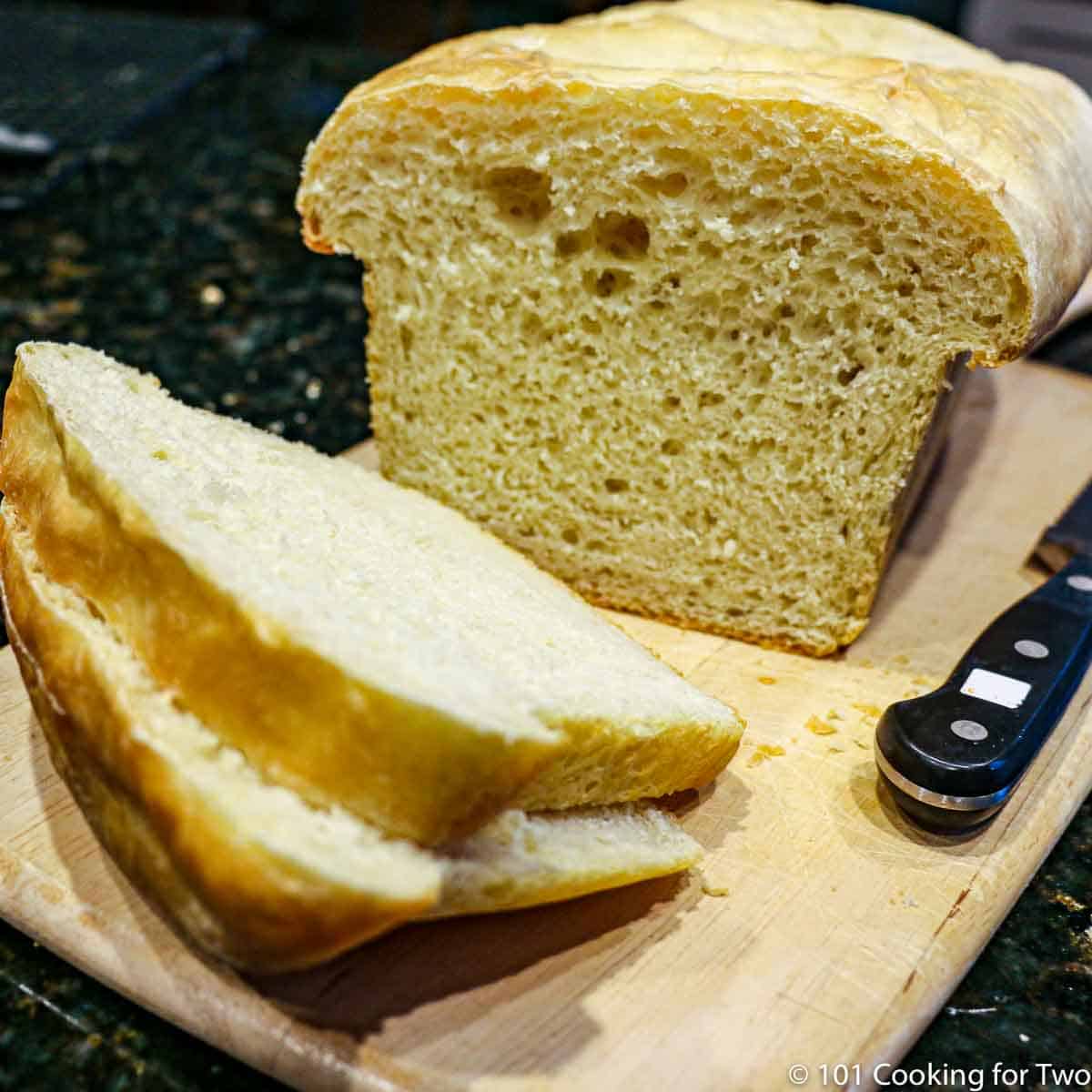
TABLE OF CONTENTS

👍Why you will try this bread
- It is an everyday bread that is easy to make and tastes great.
- Good enough that it will become your standard for years to come.
- It uses milk to give a smoother texture.
- Makes a large loaf for tasty toast and full-size sandwiches.
- One loaf at a time for smaller households.
Adaptation from King Authur Flour's Classic White Sandwich Bread.
🍞Ingredients
Flour AP
Dry powdered milk
Yeast instant or rapid
Sugar or honey
Butter
Salt
👨🍳How to make this basic homemade white bread
- To a stand mixer, add flour, yeast, salt, dried milk, honey or sugar, and soft butter. Mix well in the bowl.
- Start the mixer on a speed of two with the dough hook. Measure warm water (105°-110°) and slowly add. When the dough smooths, and some is stuck on the bottome of the bowl, you are about right.
- Allow kneading 6-7 more minutes. You're looking for smooth, bouncy, and elastic.
- Let rise covered in a bowl in a warm place to double—about 60-90 minutes.
- Deflate and move to a prepared loaf pan. Cover and allow to rise until about 1 inch above the top of the pan—about 1 to 1 ½ hours.
- Bake for 20 minutes then tent with foil and continue to bake for an additional 15-20 minutes
- The loaf is done when it is golden brown, you thump the crust and it sound hollow. If you are not sure, then an internal temperature of 195° to 200° is done.
- Cool on a rack.
✔️Tips
Flour tips
- All-purpose (AP) flour is suggested, or you can use bread flour.
- You can use up to 25% whole wheat flour, but more than that requires other adjustments.
- The most accurate way to use flour is by weight which accounts for the hydration of the flour. But we Americans insist on cups, so never "pack it in", fluff it up some, and level the cup with a knife.
Yeast tips
- Consider instant and rapid yeast the same. It dissolves rapidly and had a lot of live organisms.
- Active dry yeast (the really old-fashioned stuff) is the same organism but needs to be proofed (pre-dissolved) and will have fewer live organisms, so it will be slower to work.
- The usual substitute for honey with sugar is generally between 1 part honey to 1.5-2 parts sugar.
- Using dried milk simplifies getting the right liquid temperature for the yeast, but you can use warm milk of the same volume and temperature.
Temperature tips
- A temperature over 120° can start killing the yeast. It is much easier just to turn on the hot water instead of heating the milk.
- I liked to run some warm water into the stand mixer bowl to get it warm before starting.
- If your house is cold, it may take a long time to rise. Many ovens have a bread-rising setting (the name varies).
❄️Make Ahead and Storage FAQs
It is best to do the first rise before either refrigerating or freezing.
You can place in a loaf pan and cover with plastic wrap overnight and bake it the next morning.
To freeze, form into a loaf shape, seal the dough well, and freeze for up to 2-3 months. To bake, thaw overnight covered in a loaf pan in the refrigerator, then let it rise before baking.
Freshly baked bread should be stored airtight (after cooling) at room temperature. It will generally last about 3 days. Remember, there are no preservatives.
You can freeze baked bread, although I prefer not to. One month is probably the maximum time to have acceptable results.
📖Bread Recipes
Julia Childs French Bread; Simplified
Stand Mixer Rustic Peasant Bread

This recipe is listed in these categories. See them for more similar recipes.
Have you tried this recipe, or have a question? Join the community discussion in the comments.
Step-by-Step Photo Instructions
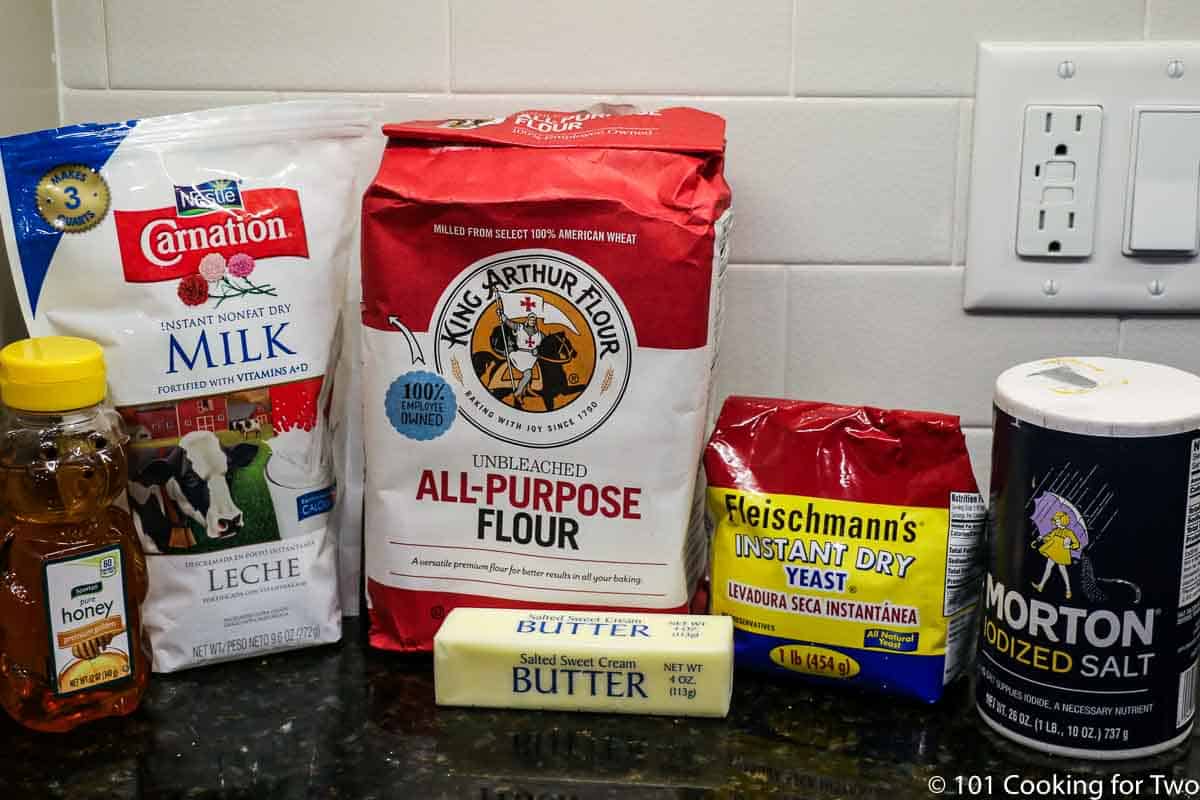
To a stand mixer bowl, add 4 cups flour, 1 package quick or instant yeast, 2 teaspoon salt, and ½ cup of dried milk. Add 1 tablespoon of honey or sugar and 2 tablespoons of soft butter. Mix well in the bowl.
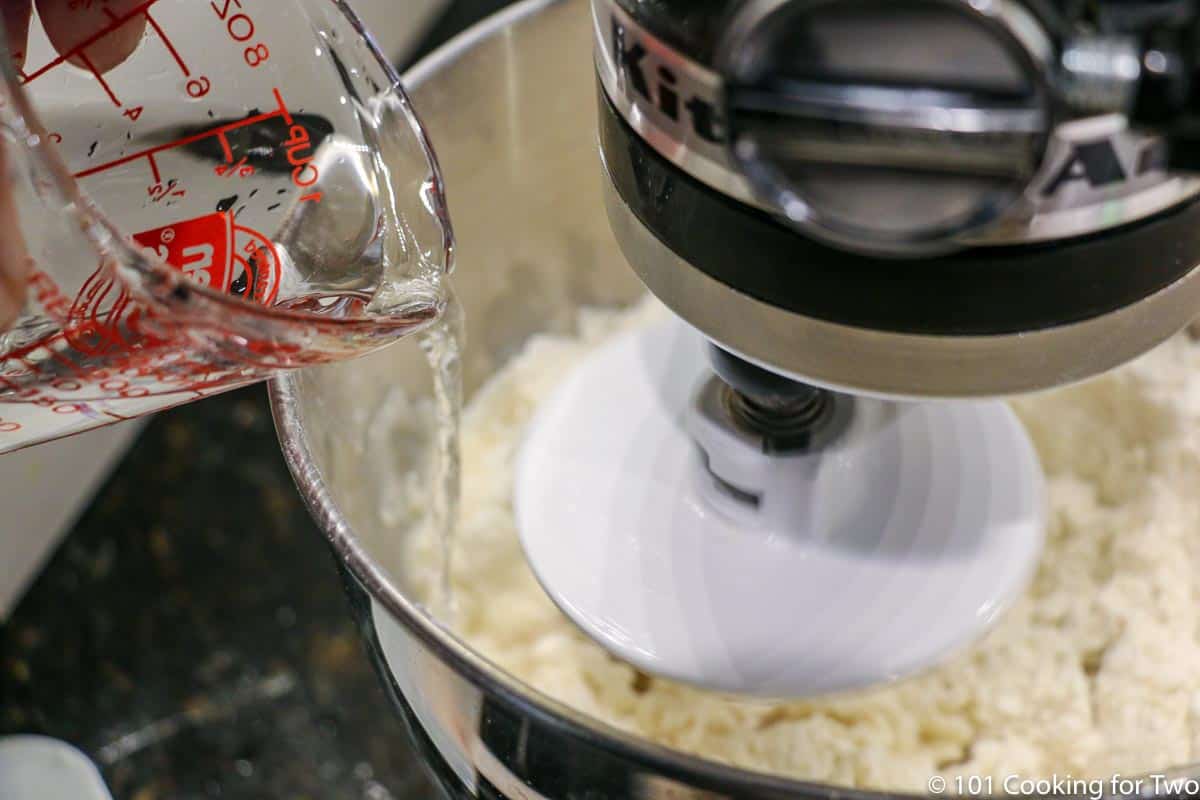
Start the mixer at a speed of two with the dough hook. Measure 1 ½ cups of water at a temperature of 105°-110°. Add 1 cup and allow it to mix. Slowly add a tablespoon of water at a time. If the dough is "shaggy," you need more water.
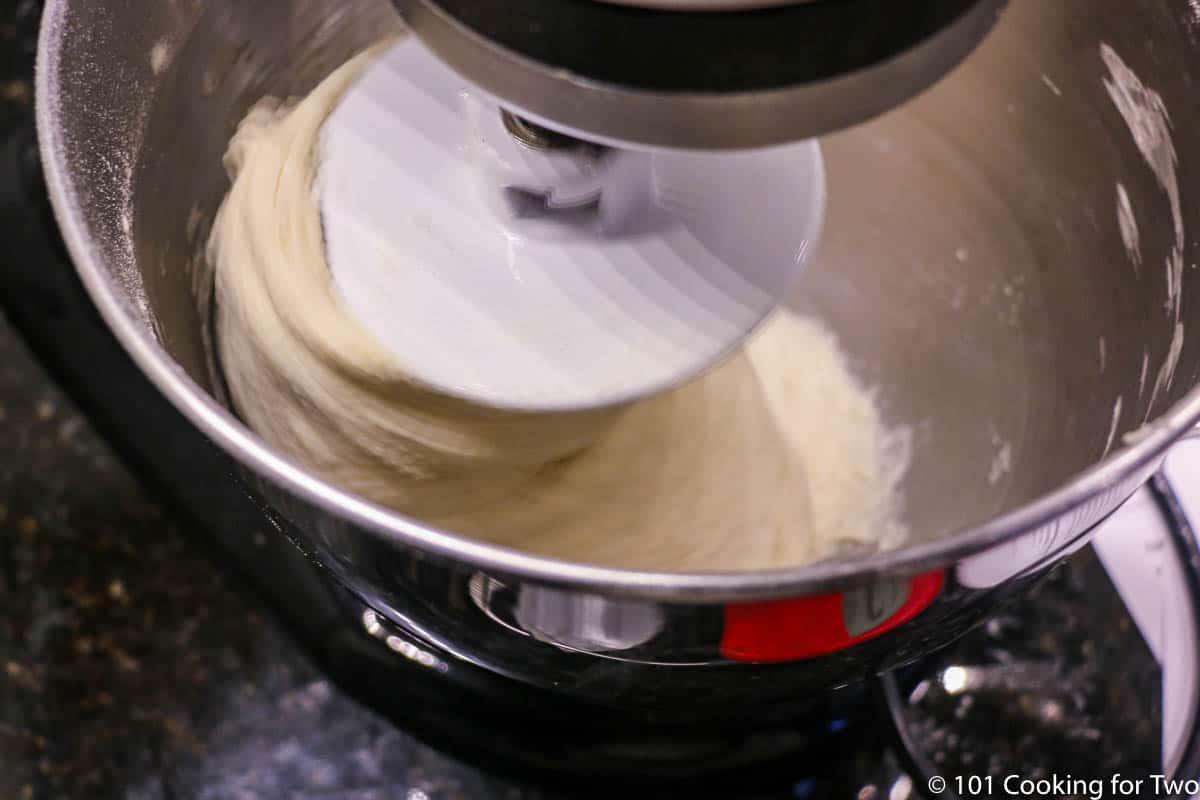
Once it smooths, you are about right. It needs to be stuck to the bottom of the bowl. Allow kneading 6-7 more minutes. You can also just mix well in a bowl and hand knead for 8-10 minutes. You're looking for smooth, bouncy, and elastic.
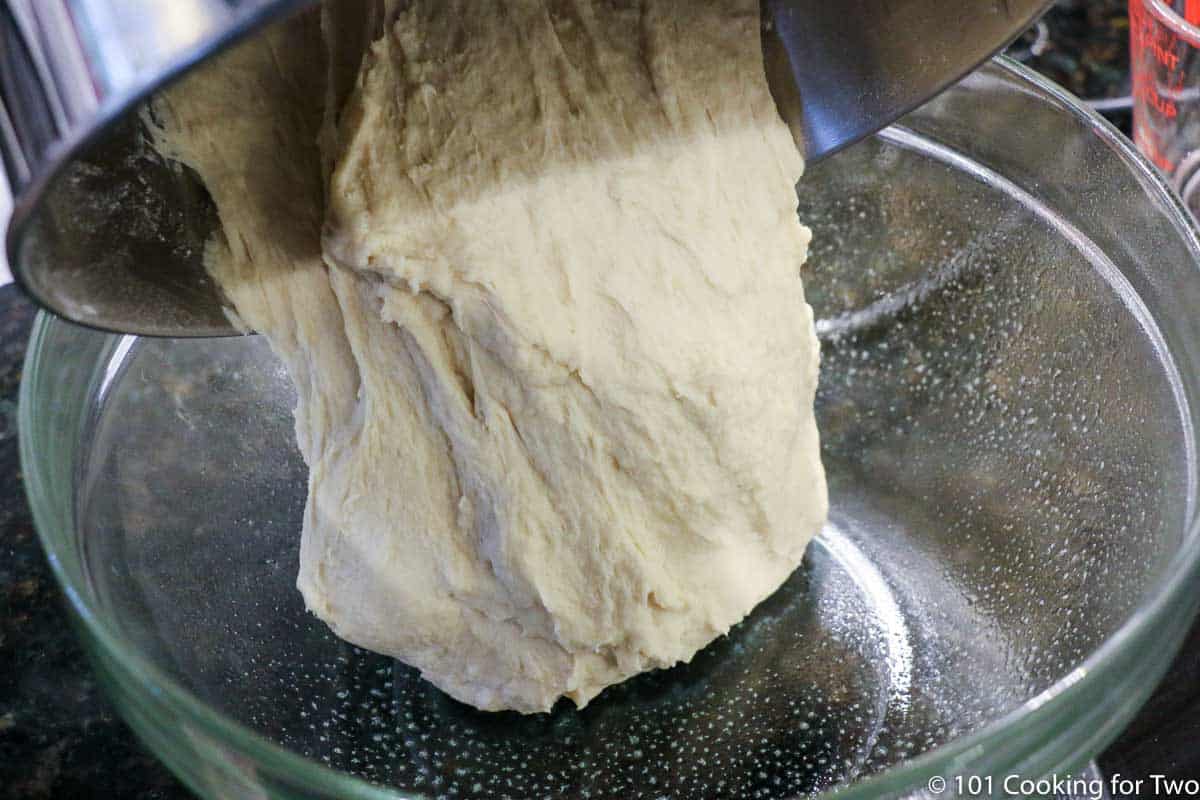
Roll into a lightly oiled bowl and form into a ball. Cover and place in a warm place. Allow to rise until puffy and almost doubled—about 60-90 minutes. Please note the variation in rising time is based mostly on temperature.
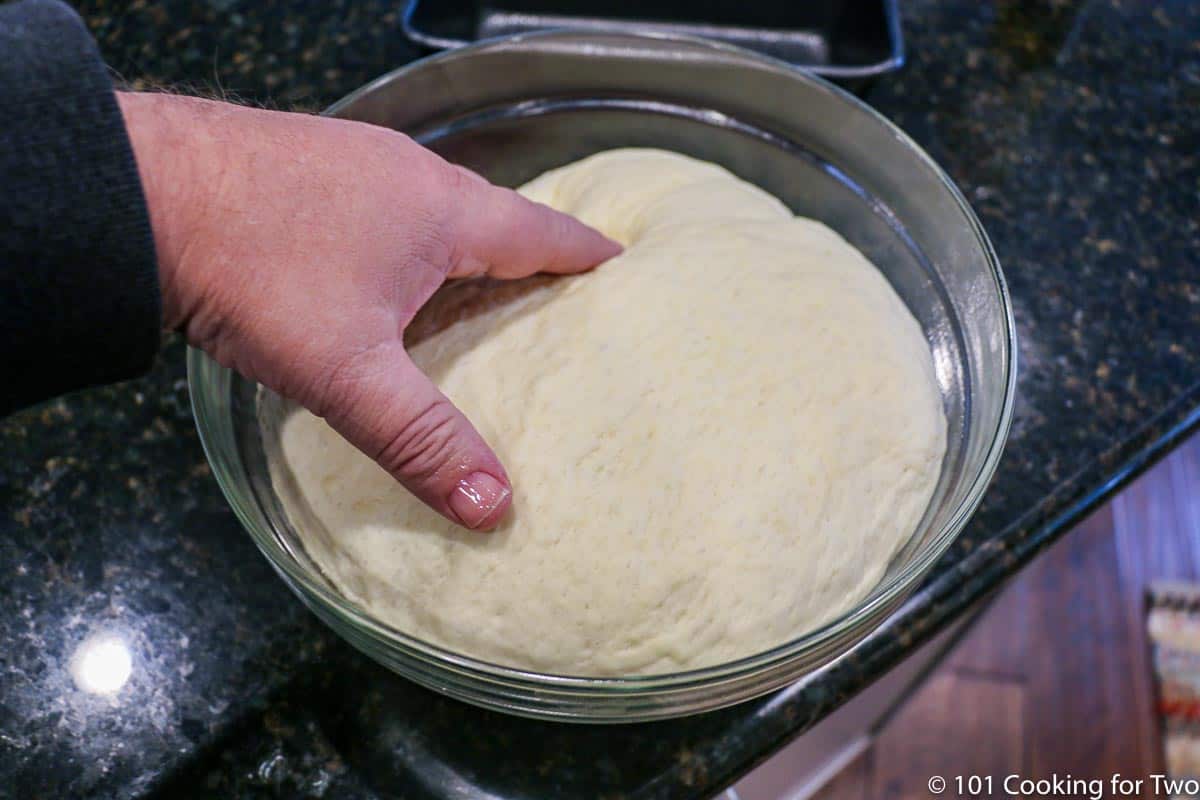
Prep a 9 by 5 loaf pan with a light coat of oil. Preheat oven to 350°. Deflate the raised dough.
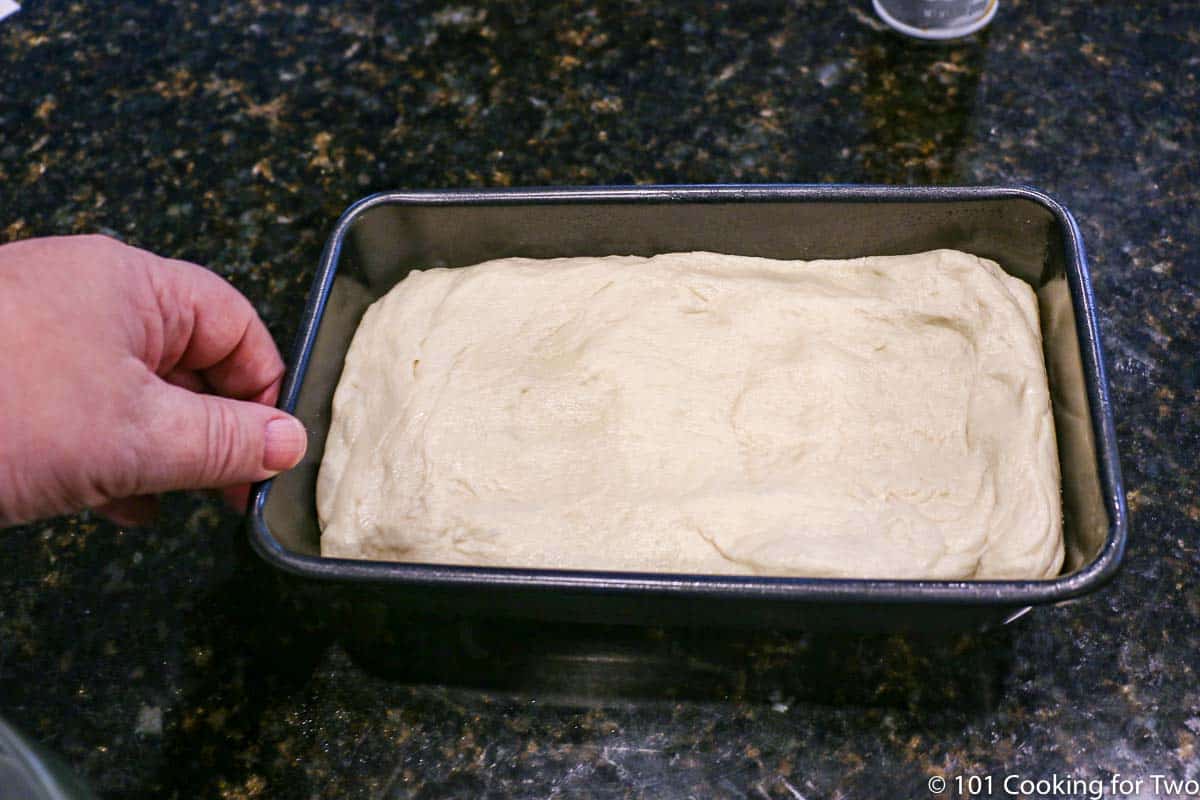
Form the dough into the prepared pan. Cover and allow to rise until about 1 inch above the top of the pan. About 1 to 1 ½ hours.
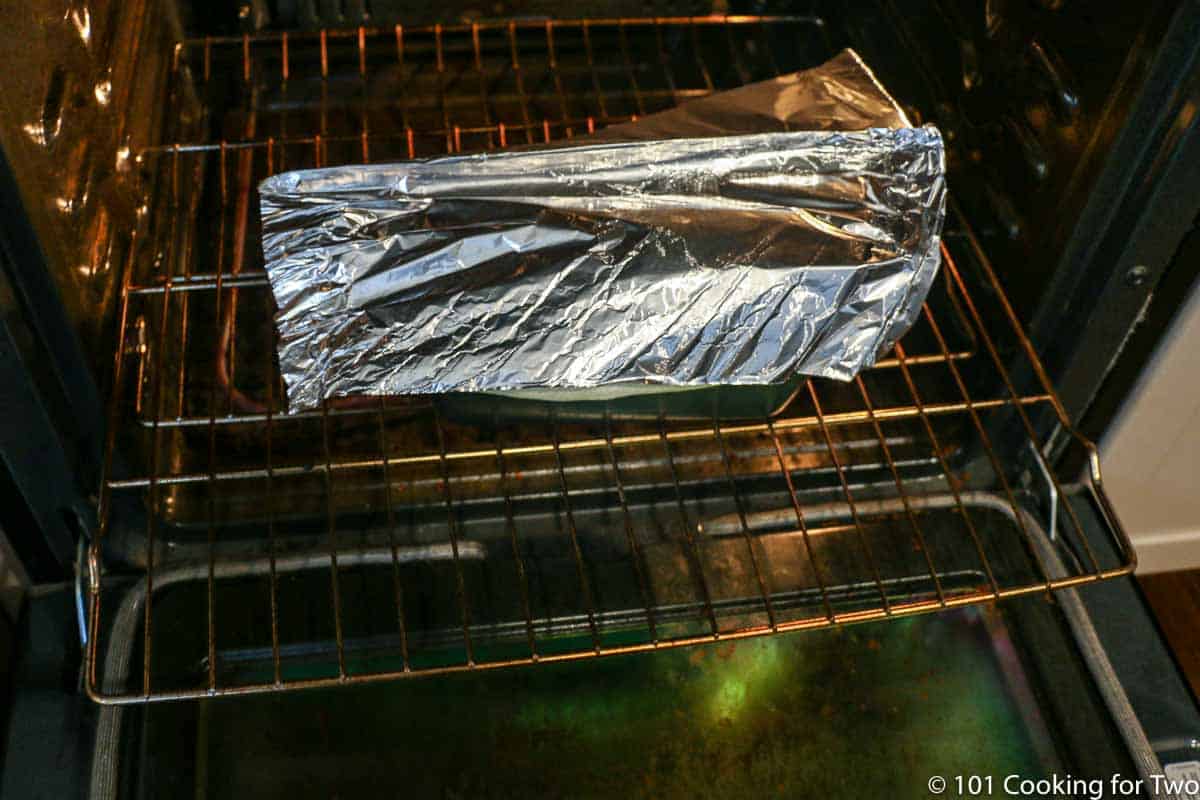
Bake for 20 minutes, then tent lightly with foil and continue to bake for 15-20 minutes more until golden brown. If you thump the crust, it should sound hollow. If you are not sure, then an internal temperature of 195° to 200° is done.
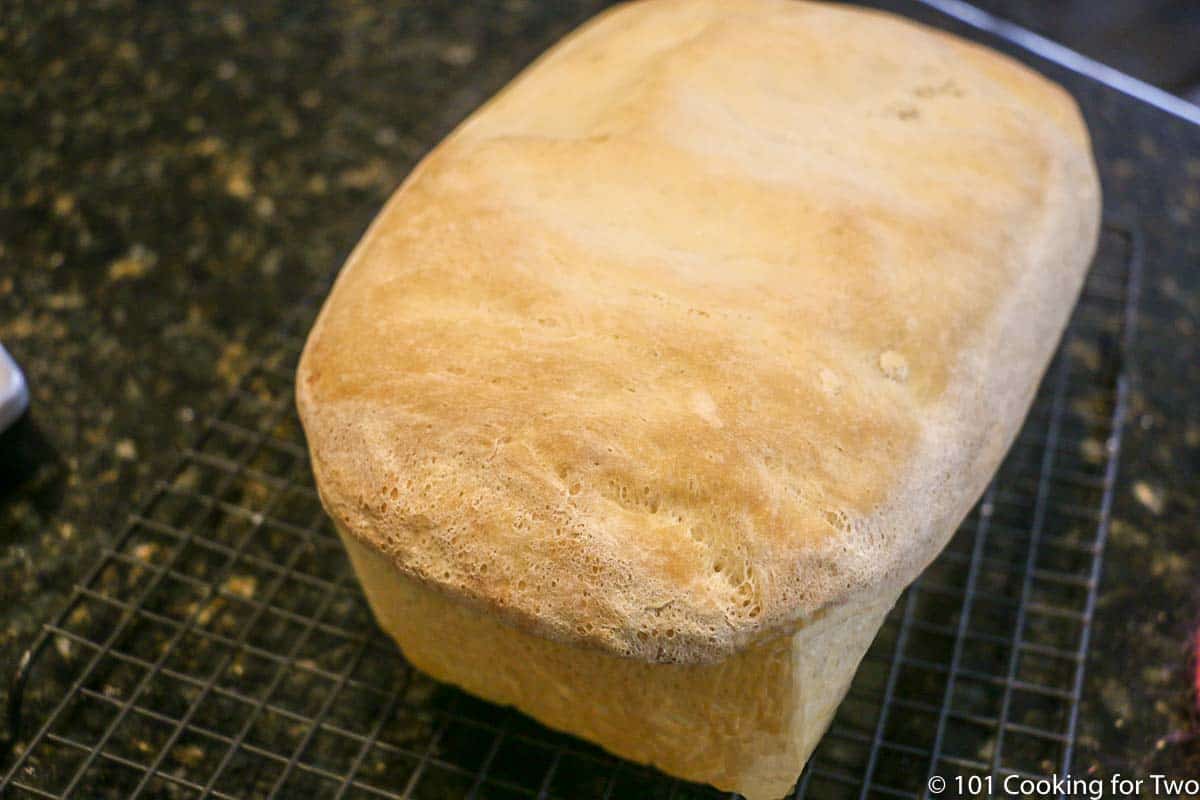
Cool on a rack.
📖 Recipe
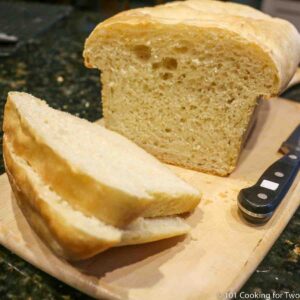
Stand Mixer Bread—Basic White
Ingredients
- 4 cups flour - AP
- ½ cups dry powdered milk
- 1 package yeast - instant or rapid
- 1 tablespoon honey - or 1 ½ tablespoon sugar
- 2 tablespoons butter - softened
- 2 teaspoons salt
- 1-1 ½ cup water - 105° to 110°
Instructions
- To a stand mixer, add 4 cups flour, 1 package quick or instant yeast, 2 teaspoon salt, and ½ cup dried milk. Add 1 tablespoon of honey or sugar and 2 tablespoons of soft butter. Mix well in the bowl.
- Start the mixer on a speed of two with the dough hook. Measure 1 ½ cups of water at a temperature of 105-110. Add 1 cup and allow it to mix. Slowly add a tablespoon of water at a time. If the dough is "shaggy," you need more water.
- Once it smooths, you are about right. It needs to be stuck some to the bottom of the bowl. Allow kneading 6-7 more minutes. You can also just mix well in a bowl and hand knead for 8-10 minutes. You're looking for smooth, bouncy, and elastic.
- Roll into a lightly oiled bowl and form into a ball. Cover and place in a warm place. Allow to rise until puffy and almost doubled—about 60-90 minutes. Please note the variation in rising time is based mostly on temperature.
- Prep a 9 by 5 loaf pan with a light coat of oil. Preheat oven to 350°. Deflate the raised dough.
- Form the dough into the prepared pan. Cover and allow to rise until about 1 inch above the top of the pan. About 1 to 1 ½ hours.
- Bake for 20 minutes, then tent lightly with foil and continue to bake for 15-20 minutes more until golden brown. If you thump the crust, it should sound hollow. If you are not sure, then an internal temperature of 195° to 200° is done.
- Cool on a rack.
Want to save this recipe for later?
Recipe Notes
Pro Tips
- This is a one-loaf recipe using a 9X6 or 10X6 loaf pan.
- Use instant or rapid yeast. If you use active dry yeast, dissolve it in warm water and wait for some foam (about 5 minutes). Also, the rising times will be longer.
- You can use liquid milk instead of dry. Use warm milk in the 105° to 110° range for the water.
- You can use bread flour. I always suggest unbleached flour. You can substitute about 25% whole wheat flour. This is not gluten-free, and gluten-free baking is a specialty that is not just substituting flour.
- The tenting with foil is to prevent over-browning of the crust since this is a large loaf.
- If you are comfortable with “tapping” for a hollow sound for the endpoint, that is fine, but an internal temperature of 195° to 200° is done.
- Good airtight at room temperature for 2-3 days. Making ahead is discussed in the post.
Your Own Private Notes
To adjust the recipe size:
You may adjust the number of servings in this recipe card under servings. This does the math for the ingredients for you. BUT it does NOT adjust the text of the instructions. So you need to do that yourself.
Nutrition Estimate
© 101 Cooking for Two, LLC. All content and photographs are copyright protected by us or our vendors. While we appreciate your sharing our recipes, please realize copying, pasting, or duplicating full recipes to any social media, website, or electronic/printed media is strictly prohibited and a violation of our copyrights.
Editor's Note: Originally published November 14, 2016. Updated with expanded options, refreshed photos, and a table of contents to help navigation.


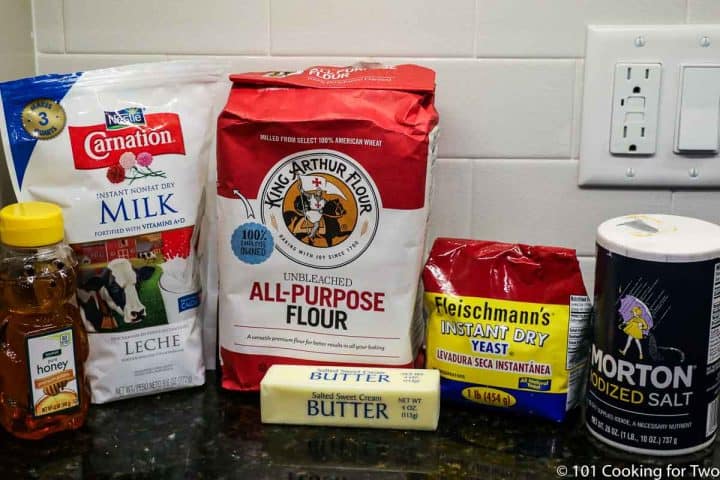
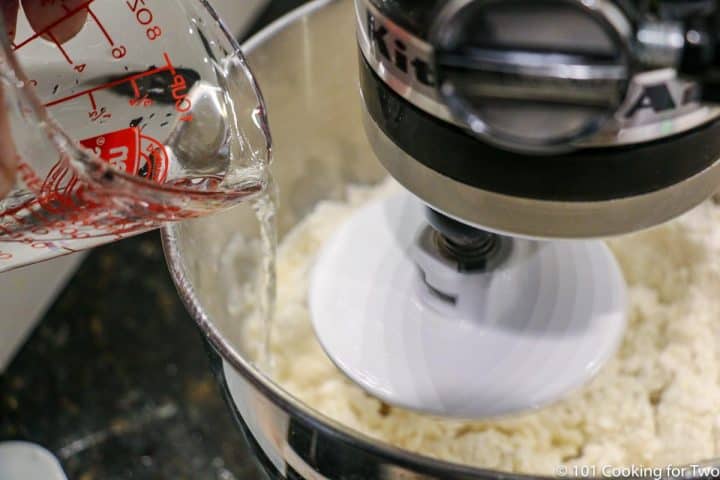
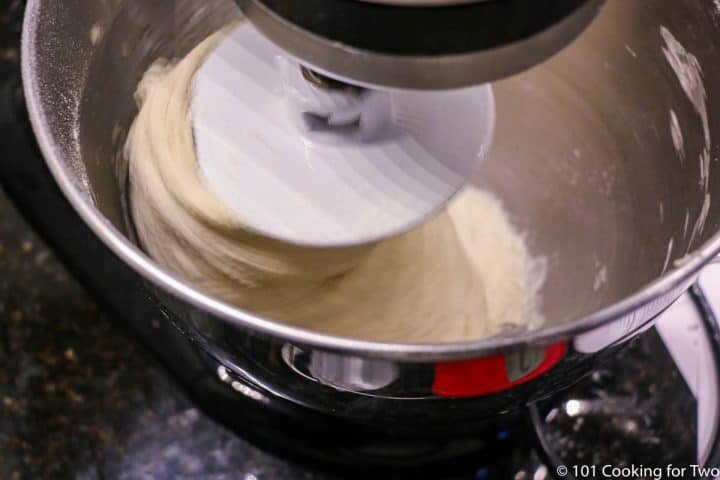
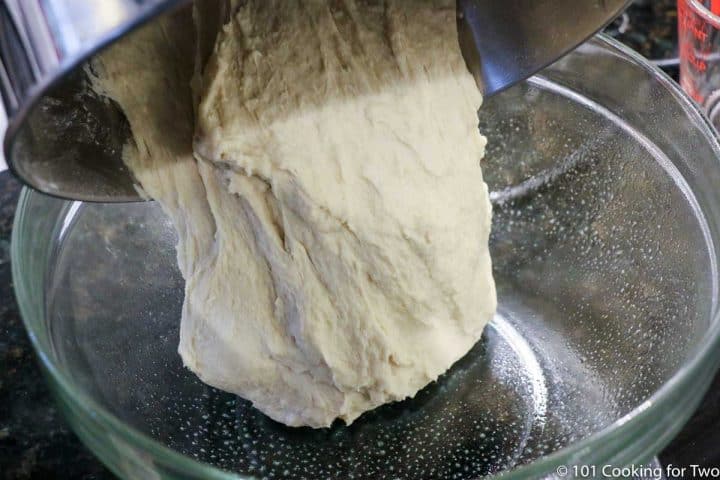
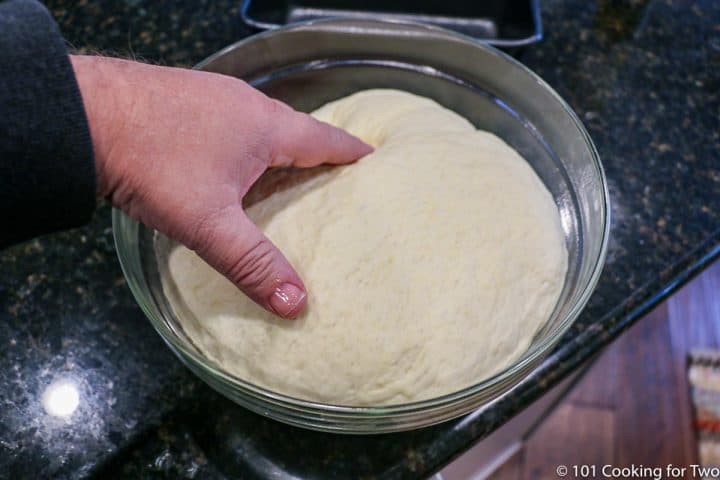
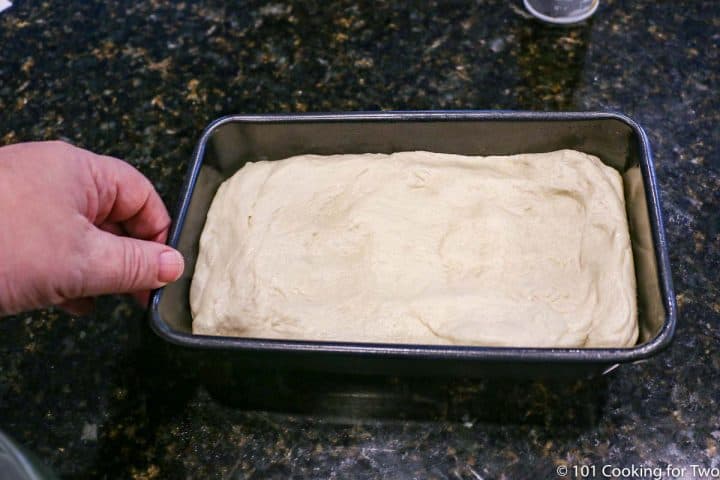
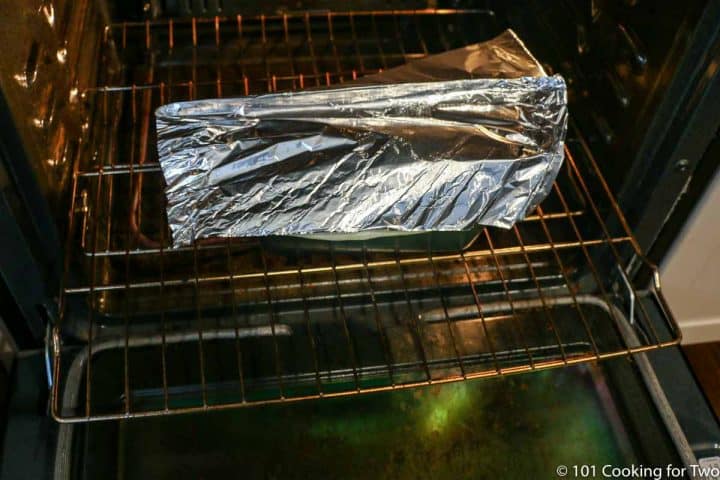
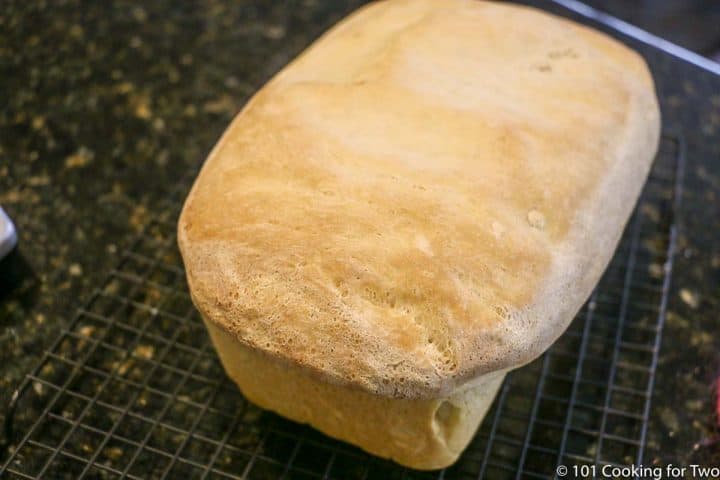
Jennell Baldwin
Dr Dan,
I was looking for a bread recipe that would be easy for my to try me hand at making bread. I came across your recipe and not only was it easy it turned out beautiful and tasted delicious.
Thanks for sharing your recipe!
Jennell
DrDan
Hi Jennell,
Welcome to the blog.
It is so nice to make a good loaf of bread. Glad it worked well for you.
Thanks for the note.
Dan
Bev astles
I have tried the Great Everyday Bread recipe two times and each time it has failed me. I thought I followed the recipe exactly. The first time the bread did not rise even though I had bought new yeast. My grandson said that the yeast had gotten too close to the salt and was killed. The second time I mix the yeast with the honey and softened butter at 85 deg. The first rise worked the second did not
Sam
Your use of the word abdication may be your attempt at a pun but really is not appropriate in the sense that King Arthur is not relinquishing anything - just my thought - I hope to try this recipe at a later date when we are home
DrDan
Well, thanks for pointing that out. It should say adaptation, not abdication. I'm not a very "pun" person. Done in by the Mac spell checker again it appears.
Have a happy holiday.
Dan
DrDan
Replace all the water with milk. It needs to been warm but not over 110 degrees like the water.
Dan
Cerwyn
Can u use a half cup of regular milk? I don't have powdered.
DrDan
Hi Joan,
No, but I have seen instructions somewhere. I do love a no-knead bread with the great gluten formation and that takes a day.
This bread is quick to make. Just thinking out loud without actually knowing but yeast needs to be warm to rise. By the time you take it out of the refrigerator and get it going again to bake, you could probably just make it.
Joan
Hi, I'm looking forward to trying this. Have you ever tried making the dough the day before baking? If so, do you do the first rise before refrigerating?